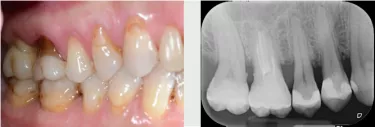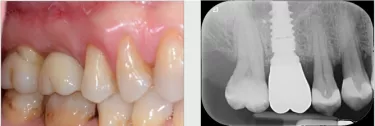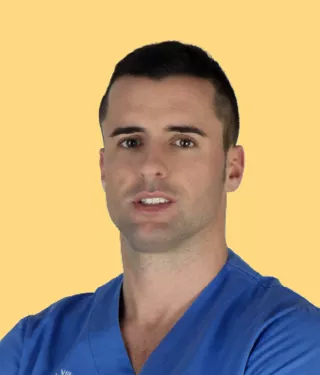
What are the benefits of a wide-platform implant?
Dr. Gabriele Villa presents new findings
Single-unit implant treatment in the molar region can be challenging, particularly when it comes to poor bone quality and high occlusal loading.
At the European Association for Osseointegration’s recent Digital Days virtual event, the periodontist and implantologist, Dr. Gabriele Villa, presented the findings of a study he led regarding the role of wide-platform implants in the molar region. In this interview, he discusses his findings and explains why immediate placement in this region can offer numerous benefits.
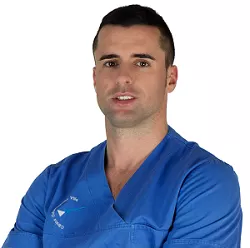
Dr. Villa, could you please give us a brief overview of your dental career?
I originally graduated from the University of Milan in 2010 before obtaining a Masters in oral implantology in 2012 at Istituto ortopedico Galeazzi. I was also an international student at New York University between 2015 and 2018, and completed the Advanced Bone and Soft Tissue Regeneration in Implant Dentistry with Prof Istvan Urban in 2019. I worked as a tutor in periodontology at Milano University 2014–2020, and now I run my private practice, Clinica Odontoiatrica Villa, as a periodontist and implantologist.
And could you tell us about the study that you recently conducted?
This was a retrospective study evaluating the clinical and radiological outcomes of treatment with NobelActive Wide Platform (WP) implants in the molar region. Fifty-one were placed in fresh extraction sockets, and 60 in healed sites, with a variety of different loading protocols.
One of the reasons we conducted it was because there aren’t many studies in the existing literature assessing how wide platform implants perform with immediate placement, even though these implants have been specially designed for high mechanical strength and soft tissue health and with a wide emergence profile.
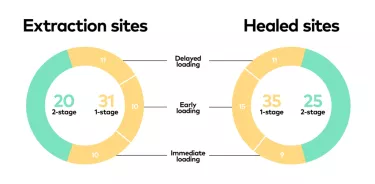
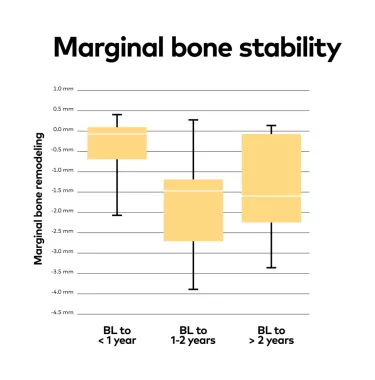
What were the key findings of the study?
Overall, the implant survival rate was 98.2%: this is a very good result when you consider that a substantial portion of these implants were immediately placed.
We also found successful marginal bone level stability: the bone remodeling was -0.38±0.71mm up to 1 year, -1.64±1.09mm by 1-2 years and –1.37±1.20mm after two or more years.
Soft tissue health has also been excellent, both in healed sites and fresh extraction sockets. Examining this data, we can see that treatment with NobelActive WP can result in healthy papilla, very little inflammation or bleeding, not too much plaque, and a low probing depth.
Why is optimal emergence profile so important in the molar region?
Great question. We know from clinical studies that sufficient soft tissue thickness around the implant is necessary for minimizing marginal bone loss, but this is often lacking in the molar region. A good amount of soft tissue is important, and that’s what the optimal emergence profile can provide.
The wide, interdental spaces in the molar region do not suit a restoration with a narrow platform, because it can lead to food-trapping, gingival inflammation, and other potential complications with the implant. With a wide-platform implant, the emergence profile more closely matches that of the interdental space, and so it supports long-term soft and hard tissue stability.
What are your main considerations for immediate placement the molar region?
I think we have to understand, first, what the patient’s expectations are. If they’re very demanding and want to have a lost molar quickly replaced, then immediate placement can be a good option as it reduces their time spent without a crown, as well as total chair time. It also prevents the adjacent and antagonist teeth from moving around and being displaced themselves, which can help to reduce further issues later on.
When it comes to indications, I perform immediate placement if there is a good amount of buccal bone and soft tissue before extraction – as a benchmark, at least 3 mm bone and 2 mm soft tissue – and if the extraction is atraumatic.
How do you determine what loading protocol to use in the molar region?
Generally speaking, if there’s a stability level of 50 Newton centimeters or more, then I will conduct immediate loading in the molar region.
Why did you specifically use NobelActive implants for this study? Were there any particular design features behind that choice?
We need high primary stability in these situations, and so the macro design of an implant is important for getting the optimal interlocking between the bone and the implant. I have a lot of confidence and great experience with NobelActive, even in soft bone and extraction sockets. The drilling blades at the apex keep the osteotomy small, and the expanding tapered body means you only condense bone gradually.
To specifically evaluate a wide platform – particularly with immediate placement – it makes absolute sense to select NobelActive WP.
Do you take advantage of the various restorative options that can be used with NobelActive?
For sure – in my experience, the internal connection with the conical seal and the hexagonal interlocking works very well with Nobel Biocare’s On1™ concept, which helps to preserve the connective tissue structure.
References
1. Villa G, Villa R, Vasilic N, et al., Clinical and radiological outcomes of rehabilitation in the molar region with wide platform implants; SU-048, Poster presented at EAO Digital Day, 2020
